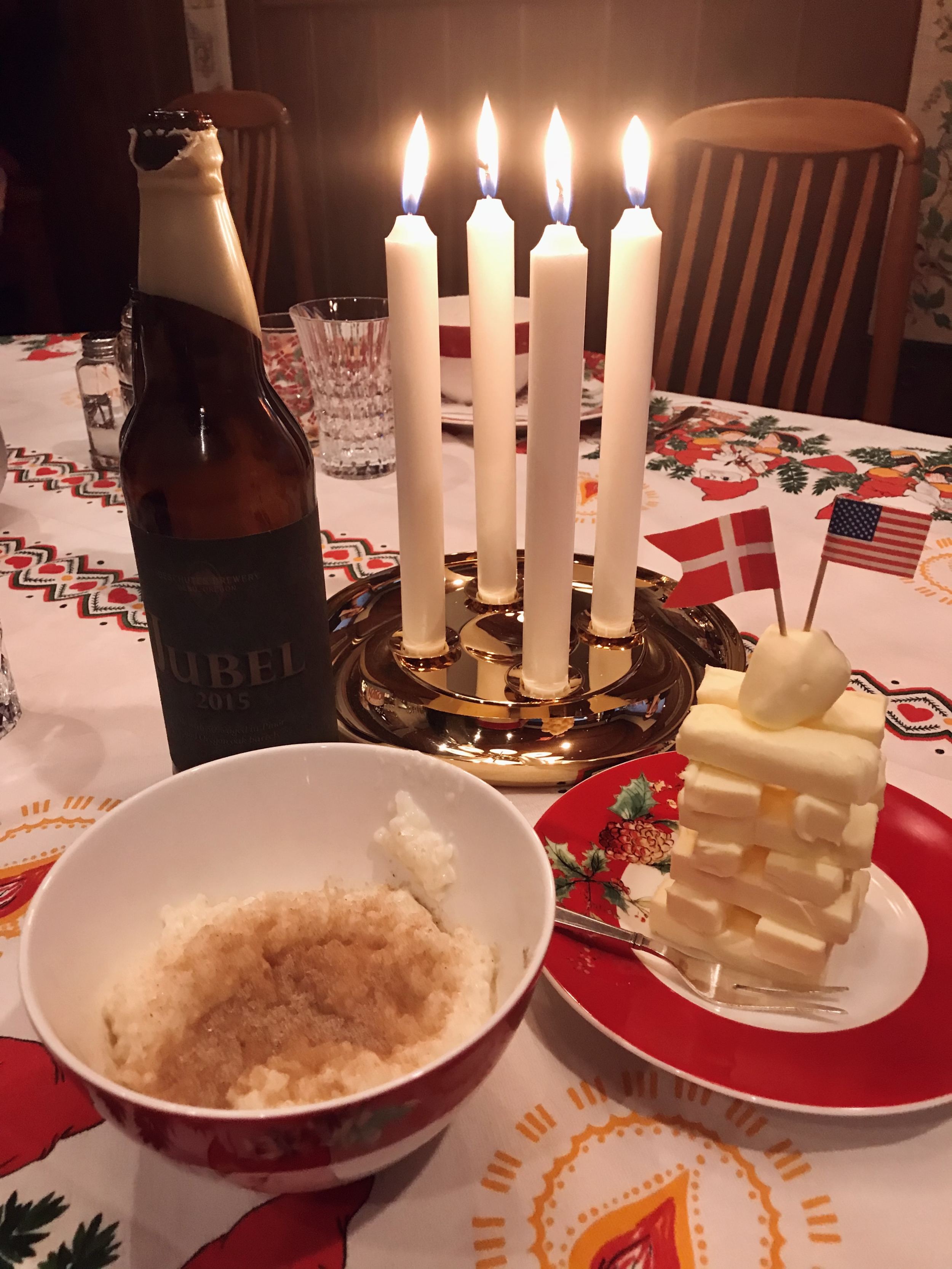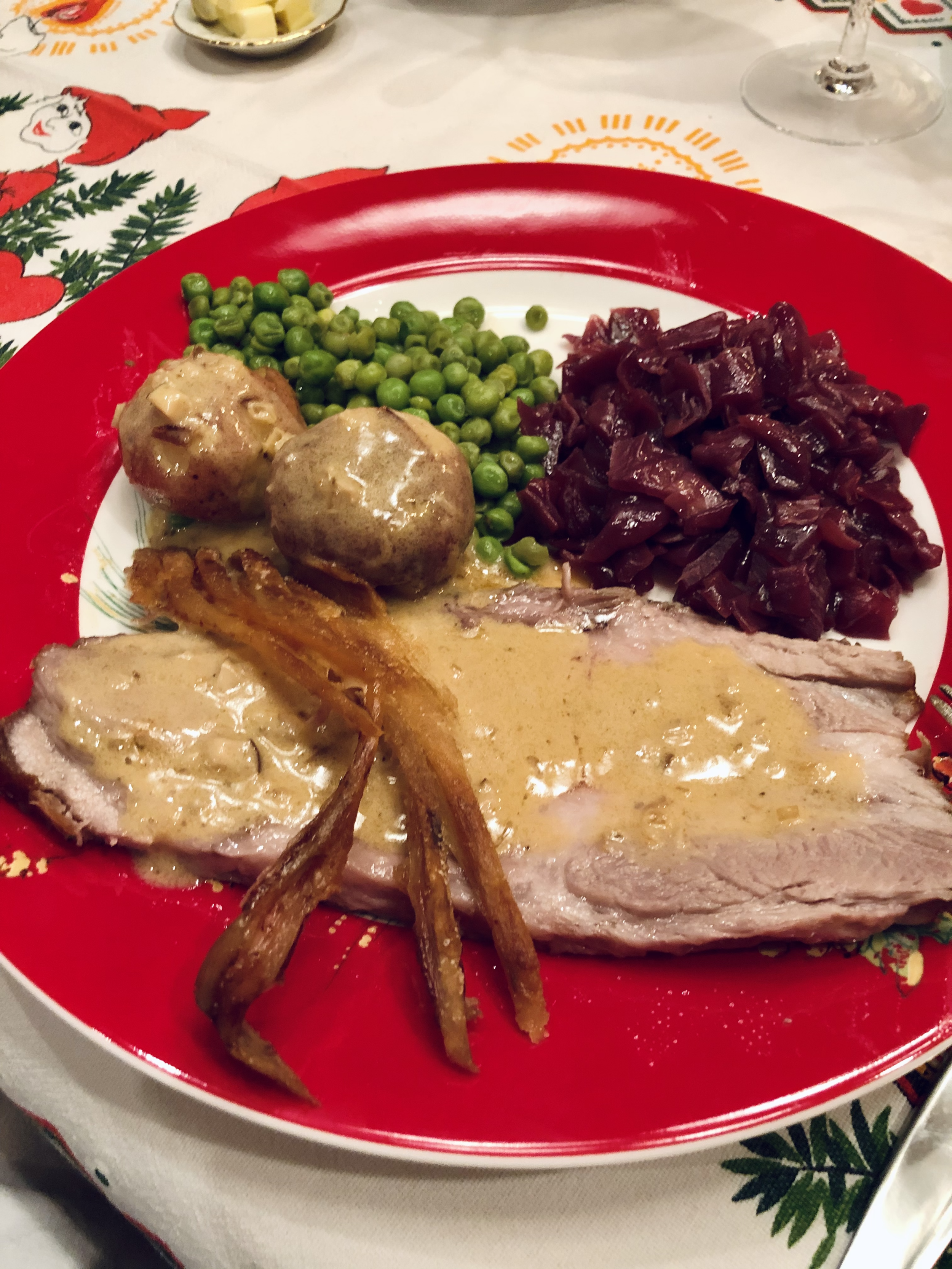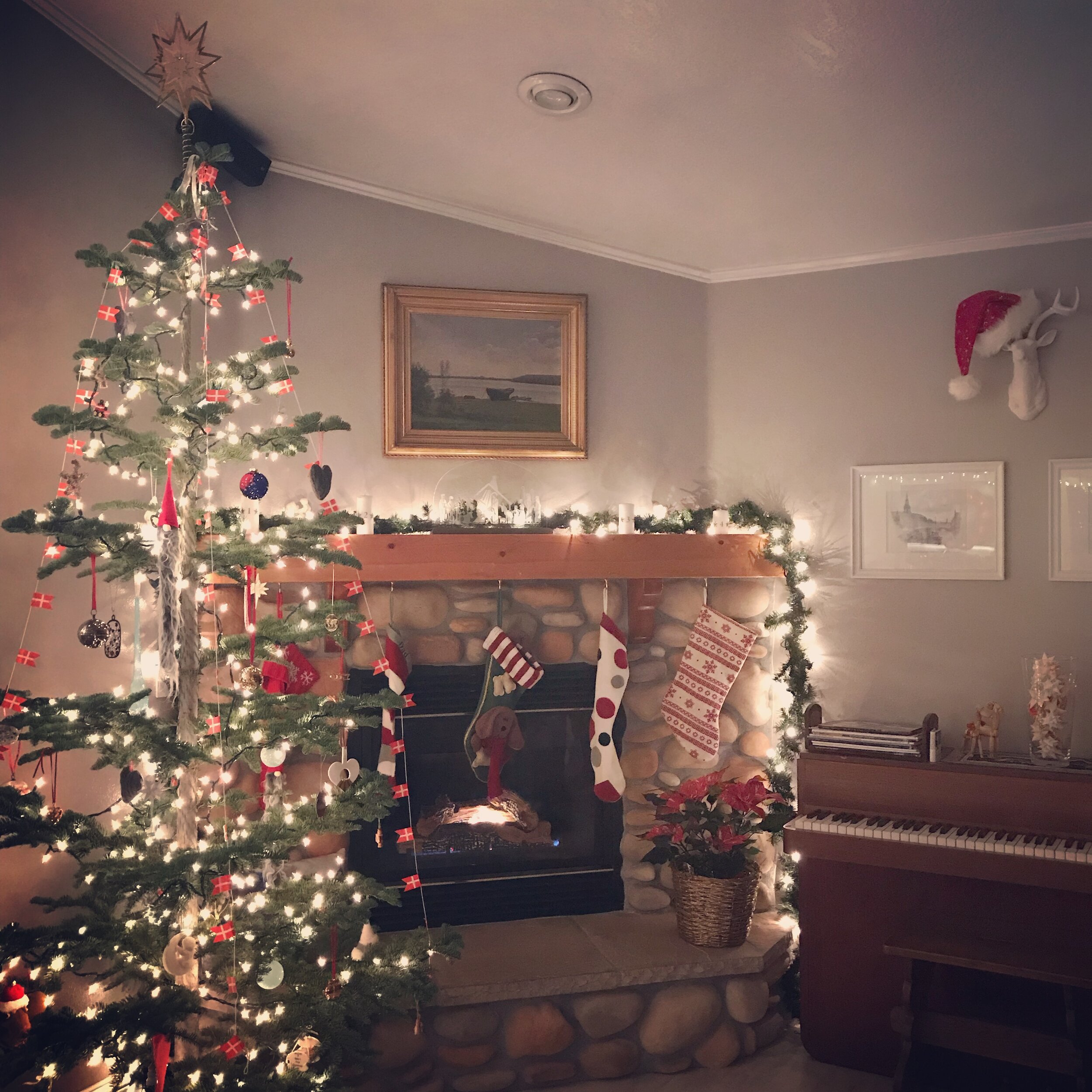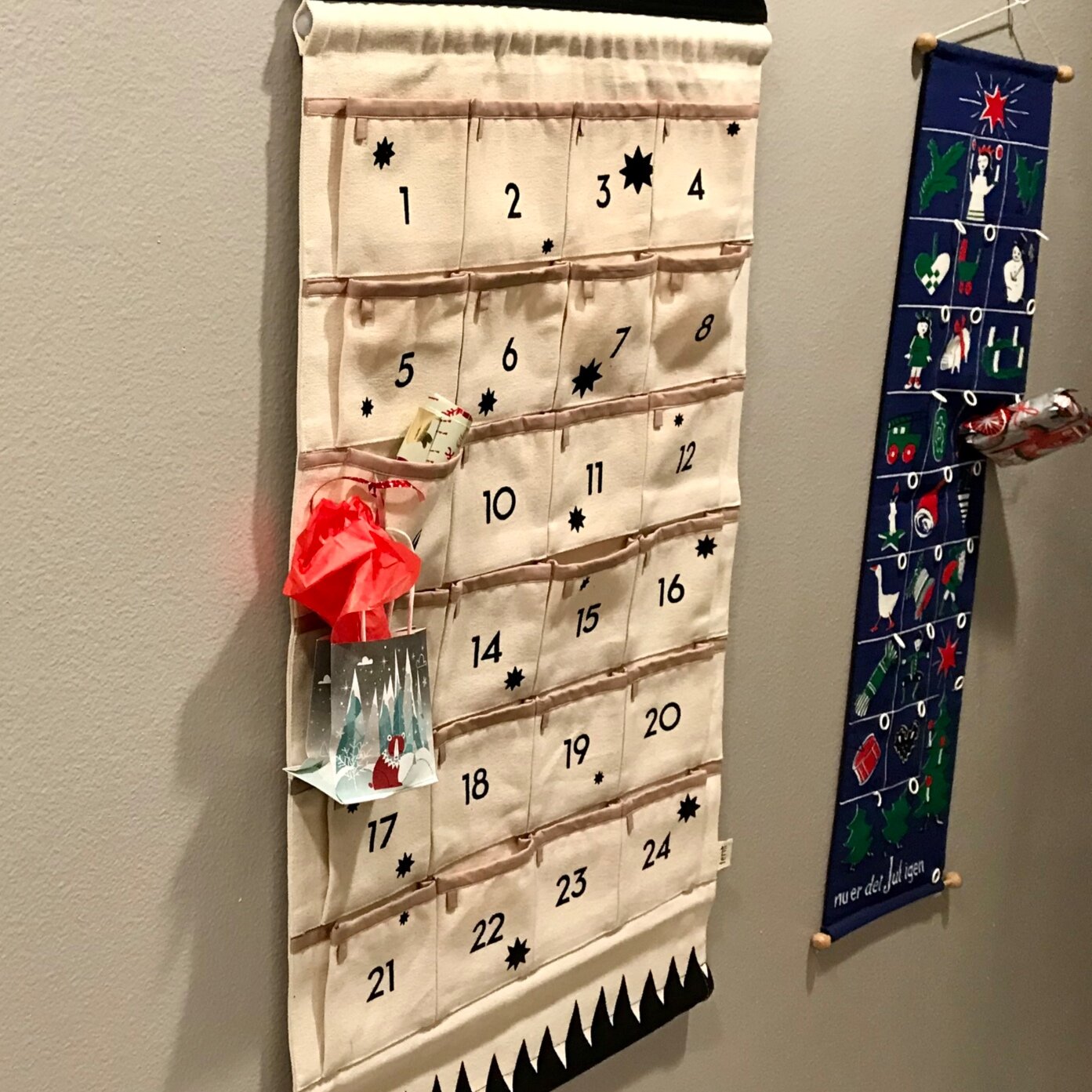Celebrate the Holidays Like a Dane with Julehygge
Growing up with a Danish mom meant family traditions as old as Denmark itself. From being woken up on your birthday with singing and Danish flags waved in your face to multi-course meals on Christmas Eve, we did a lot of celebrations a little differently.
See, Danes don't just celebrate Christmas. They embrace something called Julehygge. Through the entire month of December (and most of November), the spirit of the season fills Danish hearts and homes with glad tidings of great joy, creating light and warmth throughout the cold dark Nordic winters. And the celebrations aren't limited to just one day. The first Sunday in Advent sparks the Juletide season while advent calendars count down to the 24th with daily gifts. Winter Solstice occurs on the 21st, then there's Little Christmas Eve on the 23rd, followed by a huge feast, dancing around the Christmas tree and gift exchange on Christmas Eve. As if all that food and festivity wasn't enough, most of Christmas Day is spent enjoying a traditional Danish "lunch" of smorrebrød with Aquavit and beer.
I never understood the mayhem of Christmas mornings. I didn't see any joy in the insanity of waking up early. Father Christmas of the old Nordic folklore wasn't the same as American Santa Claus. He only came to fill the stockings, always an orange at the bottom with other small gifts and Danish chocolates. It suited me just fine to get most of my presents the night before and enjoy sleeping in. As a kid, Christmas Eve was the culmination of anticipation set in motion on December 1 when my advent calendar would hold a small sweet surprise every morning. Usually it was either a small piece of licorice or a quarter, but occasionally there would be a larger gift like a pair of socks.
Christmas Eve is when we dressed in our finest, sang carols while holding hands and walking around the tree lit only with candles (yes, we had a fire extinguisher near by, and no we didn't leave them lit unattended). Then there was the gift exchange after a huge meal of goose or roasted pork shoulder, red cabbage, and sugared potatoes.
All this was only after we'd delighted in risengrød, a traditional rice porridge served with cinnamon sugar... and one whole almond. Whoever had the almond won the mandlegave (or almond gift, which was usually a pig made out of marzipan). Every year, we'd swap bowls or hide the almond in a napkin or glass to try to get everyone to eat more than they'd bargained for. We'd end the evening eating Danish chocolate and oranges, squeezing the peels to ignite huge sparks from nearby burning candles, once the gifts had all been opened one at a time (so each person could be the center of attention and everyone could see what the others had received).
Like most families, when you grow up and start your own, traditions change. You adapt what you know and love with the people you've chosen, with what fits your life and style. I've preserved many Danish traditions because I love them so much: lighting candles on the advent wreath and preparing gifts for the advent calendar; commemorating the darkest day of the year in the more traditional Viking/pre-Jesus manner with a bonfire and multi-course Danish lunch on Winter Solstice, when my Mormor (grandmother, or literal "mother's mother") used to say, "Now the days start going the right way again," meaning there would be more daylight to enjoy in a country that gets as little as 6 hours of it in winter.
I still spend Christmas Eve with my parents for the huge meal and tree-dancing. I hang the strands of Danish flags on my tree and ornaments by Danish designer Georg Jensen among the nissemen (dwarves) and straw deer. We take our leftover risengrød and make Ris a la Mande for Christmas dessert (adding chopped blanched almonds, whipped cream, and almond extract, then top it with a warm cherry sauce).
On little Christmas Eve, when we've usually just given one gift, I have shifted some of the schedule, like having risengrød and gløgg with friends. Christmas Day now holds a bit more of the American tradition of morning gifts (and a lucky nog latte* in my favorite tree mug), one or more of our favorite holiday flicks and dinner of ham or prime rib. I also add Boxing Day to our calendar to celebrate the British heritage in our family as well, with Christmas crackers, soda bread and shepherd's pie. We'll often spend the first or last night of Hanukkah reflecting on the special relationship Denmark had with the Jewish people during WWII, reading stories and honoring the traditions of the holiday.
As I come to nearly four decades of living, I've started to notice how much faster the time between each Christmas seems to go. And while there are so many traditions I love and never grow tired of, I've started a few new ones too. Shortly after all the shopping madness that occurs the weekend after Thanksgiving, we'll put out a basket of goodies for the delivery people that stays on our front porch through the end of the year. It's a small gesture of thanks for so much extra work incurred because of gift-giving (and consumerism), and just giving out a few bottles of water, granola bars, candy canes, tissue packets, gum, or anything else the local dollar store might have, can really brighten up the day of these drivers who work so hard to get so much delivered. It's not true Julehygge unless it's shared.
Because that's really what all this is about. Holiday traditions are just that, because of the way they make us feel. The Danish word hygge is difficult to translate into English because it's a feeling that there just isn't a single word for. Cozy is part of that feeling. But it's also a sense of connection, finding joy and love in something simple, the warmth and comfort of being at home, wherever and with whomever you might be. When you throw in a bit of Christmas spirit—giving and kindness, winter majesty, fun, food, and family—that's when you get Julehygge.
*Lucky Nog Latte: espresso with steamed eggnog and a splash of Irish cream liqueur (or make it a Holy Nog Latte and use hazelnut liqueur instead).









